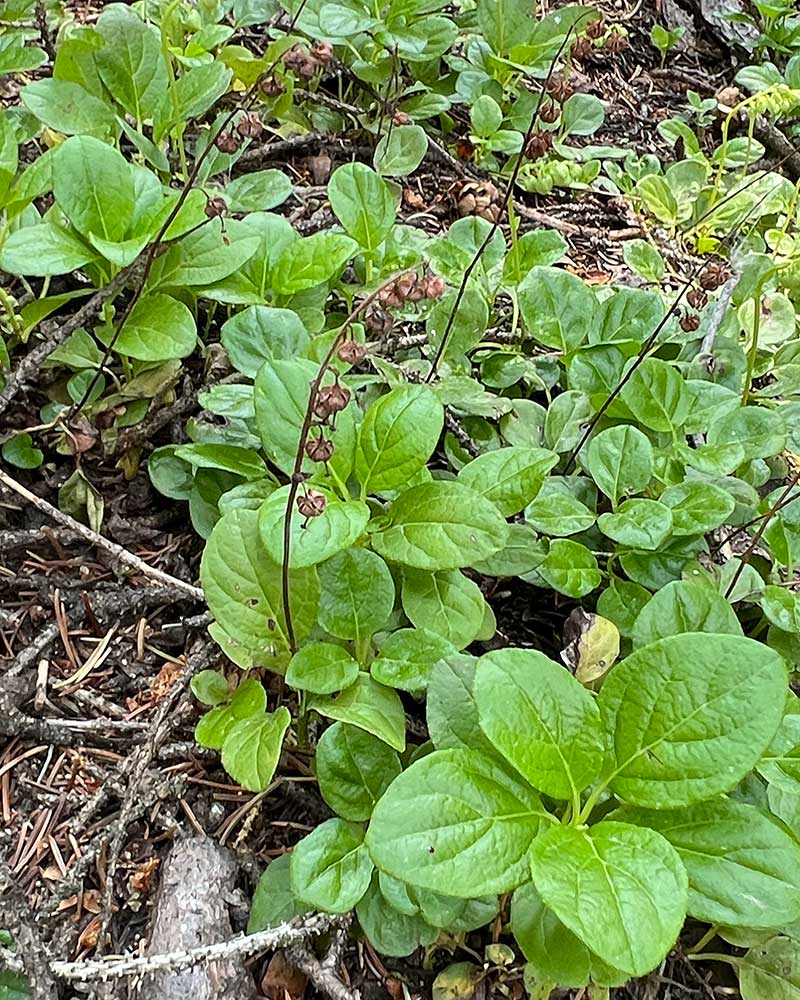Orthilia secunda / sidebell wintergreen
- evergreen herb or sub-shrub
- boggy understory and forest stream banks
- basal, egg-shaped leaves with prominent veins
- very small to teeny creamy or green-ish flowers all on one side of stem
Also known as: one-sided-wintergreen, serrated-wintergreen, one-sided pyrola, one-sided shinleaf
Synonym: Pyrola secunda
See also: Pyrola asarifolia / pink pyrola
Sidebell or one-sided wintergreen is so named because all the flowers are on one side of the peduncle, and because it is green all winter. It is not a mint, and you can’t flavor gum with it. It’s just, well, green. You’re most likely to find this little plant on mossy floors of forests and around bogs. Mossy floors are most visible in early spring or late fall.
Sidebell wintergreen blooms in mid-summer. The inflorescence is a raceme with up to 25 flowers (or as few as 3) on short stalks. Perhaps because all the weight is on one side, the flowering stem arcs at the top of the plant. Each flower is teeny, about ¼ inch long. They are creamy to greenish white. With good vision or a hand lens, they are seen as urn-shaped. The creamy-tipped stamens and long green style protrude out of the urn at the center.
Sidebell leaves are basal, whorled and varying in size from ½ to 2 inches long. Basically, they are egg-shaped with a pointy-ish tip, mostly entire and hairless, with petioles up to ¾ inch long, so a significant fraction of the length of the blades.
The fruit is a flattened globular capsule about ¼ inch in diameter. The long style persists even after the fruit dries, which means before it is fully dry it may be hard to distinguish from a flower. The dried fruits may hang on over the winter, too. There’s a photo of this in the gallery.
Although sidebell wintergreen produces good seeds, It may also form small colonies, spreading via rhizomes.
Interesting bits: until relatively recently, this species was classed in the genus Pyrola, but it is distinguished in several ways. First, it is short. The flowers are green and closed, and on one side of the stem. Other Pyrolas have white, green or pink flowers, with open (not urn-shaped) petals, and the flowers are on both sides of the stems. See, for example, Pyrola asarifolia / pink pyrola.
Even more interesting, sidebell wintergreen is a mixotroph. That means it gets about one half of its carbon from mycorrhizal networks. Of course, these fungi get that carbon from roots of nearby trees. Apparently, the wintergreen provides nothing in return.

